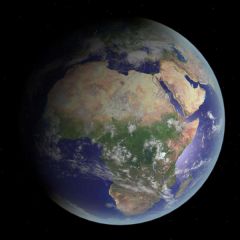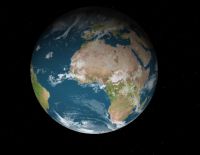|
|
| Line 123: |
Line 123: |
| | |- | | |- |
| | !Add-on!!Source!!Version!!Author!!Type!!Release Date!!Compatibility!!Wiki article | | !Add-on!!Source!!Version!!Author!!Type!!Release Date!!Compatibility!!Wiki article |
| − | |-
| |
| − | |[https://www.orbiter-forum.com/resources/orbiter-2016-torrent-files.5427/ Orbiter 2016 - torrent files]||O-F Resources||2016||martins||Orbiter Download||23 August 2016||Orbiter 2016||
| |
| − | |-
| |
| − | |[https://www.orbiter-forum.com/resources/orbiter-2016-core-msi-exe-edition.5426/ Orbiter 2016 Core - MSI / EXE edition]||O-F Resources||2016||martins||Orbiter Download||23 August 2016||Orbiter 2016||
| |
| − | |-
| |
| − | |[https://www.orbiter-forum.com/resources/orbiter-2016-core-zip-edition.5425/ Orbiter 2016 Core - ZIP edition]||O-F Resources||2016||martins||Orbiter download||23 August 2016||Orbiter 2016||
| |
| − | |-
| |
| − | |[http://orbit.medphys.ucl.ac.uk/download.html Orbiter core package download]<br>(The actual download page for Orbiter 2016)||Orbiter download page||Orbiter 2016||martins||Orbiter download||23 August 2016||Orbiter 2016||
| |
| − | |-
| |
| − | |[https://www.orbiter-forum.com/resources/celestial-bodies-motion-part-1-4-v2-0-0.132/ Celestial Bodies Motion - Part 1/4 - v2.0.0]||O-F Resources||v2.0.0||cristiapi||Scenery||2 July 2015||||
| |
| − | |-
| |
| − | |[https://www.orbiter-forum.com/resources/orbiter-2010-p1.5428/ Orbiter 2010-P1]||O-F Resources||100830||martins||Orbiter Download||30 August 2010||Orbiter 2010-P1||
| |
| − | |-
| |
| − | |[https://www.orbiter-forum.com/resources/orbiter-2010.5429/ Orbiter 2010]||O-F Resources||100606||martins||Orbiter Download||5 June 2010||Orbiter 2010||
| |
| − | |-
| |
| − | |[https://www.orbiter-forum.com/resources/orbiter-2006-p1.5430/ Orbiter 2006-P1]||O-F Resources||060929||martins||Orbiter Download||29 September 2006||Orbiter 2006-P1||
| |
| − | |-
| |
| − | |[https://www.orbiter-forum.com/resources/2006-2006-p1-hi-res-textures.5438/ 2006 & 2006-P1 Hi-Res Textures]||O-F Resources||2006||martins||High-Resolution Textures||4 May 2006||Orbiter 2006||
| |
| − | |-
| |
| − | |[https://www.orbiter-forum.com/resources/orbiter-2006.5431/ Orbiter 2006]||O-F Resources||060504||martins||Orbiter Download||4 May 2006||Orbiter 2006||
| |
| − | |-
| |
| − | |[https://www.orbiter-forum.com/resources/2005-with-p1-patch-files.5432/ 2005 (with P1 patch files)]||O-F Resources||050216||martins||Orbiter Download||16 February 2005||Orbiter 2005||
| |
| − | |-
| |
| − | |[https://www.orbiter-forum.com/resources/orbiter-2003-p2.5433/ Orbiter 2003-P2]||O-F Resources||031217||martins||Orbiter Download||17 December 2003||Orbiter 2003-P2||
| |
| − | |-
| |
| − | |[https://www.orbiter-forum.com/resources/orbiter-2002-p1-with-subsequent-patches.5435/ Orbiter 2002-P1, with subsequent patches]||O-F Resources||021202<br>021206<br>021217<br>030303||martins||Orbiter Download||2 December 2002||Orbiter 2002-P1||
| |
| − | |-
| |
| − | |[https://www.orbiter-forum.com/resources/orbiter-2002.5436/ Orbiter 2002]||O-F Resources||020419||martins||Orbiter Download||19 April 2002||Orbiter 2002||
| |
| | |- | | |- |
| | |[https://www.orbiter-forum.com/resources/orbiter-2001.5437/ Orbiter 2001]||O-F Resources||010503||martins||Orbiter Download||3 May 2001||Orbiter 2001|| | | |[https://www.orbiter-forum.com/resources/orbiter-2001.5437/ Orbiter 2001]||O-F Resources||010503||martins||Orbiter Download||3 May 2001||Orbiter 2001|| |
Revision as of 03:30, 29 July 2024
| Earth
|

|
| Earth in Orbiter 2016 with D3D9
|
| Designation
|
| Name |
Earth
|
| Reference body |
Sun
|
| Number of satellites |
1
|
| Planetary mean orbits
|
| Epoch |
J2000 (1 January 2000)
|
| Semimajor axis (a) |
1.00000011 AU
(1.495978871×1011 km)
|
| Eccentricity (e) |
0.01671022
|
| Inclination (i) |
0.00005°
(0.00000087 radian)
|
| Longitude of the ascending node (LAN, ☊) |
-11.26064°
(-0.1965352 radian)
|
| Longitude of periapsis (ϖ) |
102.94719°
(1.796767 radian_
|
| Mean longitude (L) |
100.46435°
(1.753434 radian)
|
| Planetary orbital element centennial rates
|
| Semimajor axis (a) |
-0.00000005 AU/Century
|
| Eccentricity (e) |
-0.00003804 Century-1
|
| Inclination (i) |
-46.94 seconds/Century
|
| Longitude of the ascending node (LAN, ☊) |
-18228.25 seconds/Century
|
| Longitude of periapsis (ϖ) |
1198.28 seconds/Century
|
| Mean longitude (L) |
129597740.63 seconds/Century
|
| Selected physical parameters
|
| Mean radius |
6371.01 km
|
| Mass |
5.973698968×1024 kg
|
| Density |
5.515 g/cm3
|
| Sidereal rotation period |
23.93447 hours
|
| Sidereal orbit period |
0.9999786 years
|
| Magnitude V(1,0) |
-3.86
|
| Geometric albedo |
0.65
|
| Equatorial gravity |
9.780327 m/s2
|
| J coefficients |
1082.6269e-6 -2.51e-6 -1.60e-6 -0.15e-6
|
| Escape velocity |
11.186 km/s
|
| SOI radius |
2.6×108 m
|
| Rotation elements
|
| North pole right ascension (α1) |
n/a
|
| North pole declination (δ1) |
90°
|
| Obliqutiy of ecliptic |
23.44°
|
| Longitude of Sun's transit |
0°
|
| Atmospheric parameters
|
| Surface Pressure |
101.4 kPa
|
| Surface Density |
1.217 kg/m3
|
| Scale height |
8.5 km
|
| Average temperature |
288 K
|
| Wind speeds |
0-100 m/s
|
| Ecliptic position from primary*
|
| Note |
*Elements given are from Orbiter.pdf (2016)
|
Earth is the third planet from the Sun and is the only body known to have life. It is one of the four 'rocky' planets, the others are Mercury, Venus, and Mars. The Moon is the only natural satellite orbiting the earth.
The Earth is close to an oblate spheroid, but, in Orbiter it's modeled as a sphere, its mean diameter is 6371.01 km, but gravitational calculations include the J coefficients given in the table to the right. The sidereal day is 86164.092 seconds, the obliquity is 23.439291°.
Earth is one of the twelve original bodies in Orbiter since the earliest known version. Its orbit was defined in the Earth.cfg file in Orbiter 2001 and Orbiter 2002, but was later defined in the Vsop87.dll file beginning with Orbiter 2002-P1.
Orbital characteristics
Earth is the third planet from the Sun, after Mercury and Venus, with a semimajor axis in Orbiter of about 1.49598×1011 km, and an orbital eccentricity of about 0.0167, and
an inclination of 0.00005° (0.00000087 radian).
Physical characteristics
The Earth is modeled in Orbiter as a sphere 6371.01 km in radius with a mass of about 5.974×1024 kg. The Sidereal rotation period is just under 24 hours. At the surface the acceleration due to gravity is 9.78 m/s2</sup, and the Escape velocity|escape velocity]] is 11.186 km/s.
Geological features
In Orbiter 2016, Earth is modeled as a sphere with elevations approximating the elevations on the real Earth, including sea level. Included in the stock version are files for Antartic Stations, Cities, Impact Features Islands, Mountains and volcanos, Tracking Stations, and some miscellaneous features. Files are located in your Orbiter\Config\Earth\Marker directory.
Natural satellites
Spaceports
The stock Orbiter includes 35 bases, some of which include details such as runways, landing pads, buildings, etc, some only include a marker to depict its location.
See Listing of Earth spaceports in Orbiter2016
Orbiter versions and add-ons which include Earth
| Add-on |
Source |
Version |
Author |
Type |
Release Date |
Compatibility |
Wiki article
|
| Orbiter 2001 |
O-F Resources |
010503 |
martins |
Orbiter Download |
3 May 2001 |
Orbiter 2001 |
|
See also
External links
Earth at Wikipedia
Gallery
The Earth seen from Apollo 17.
From Wikimedia Commons.
Rotation of the Earth at 23.4°.




